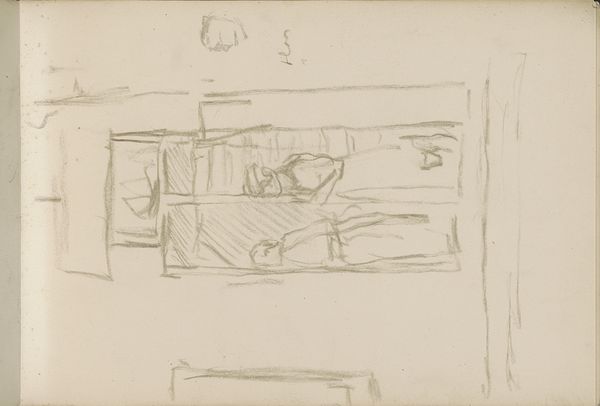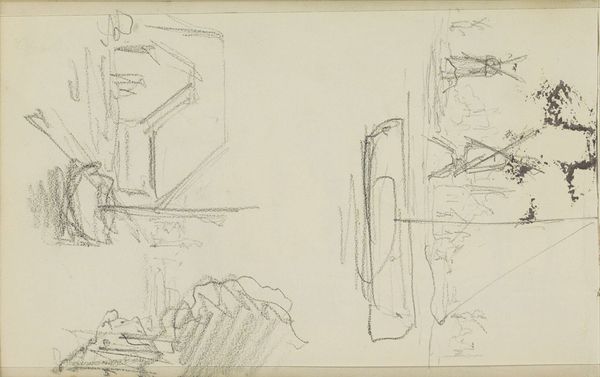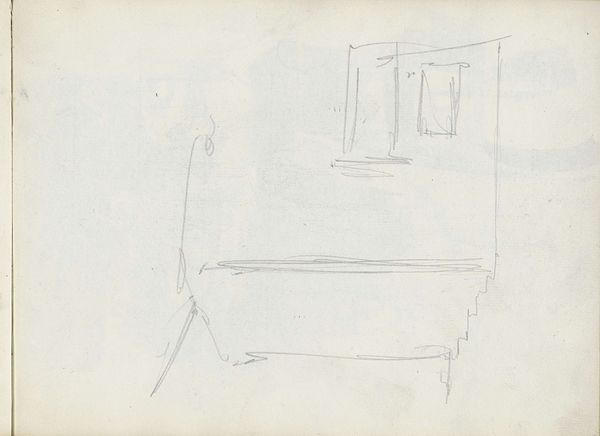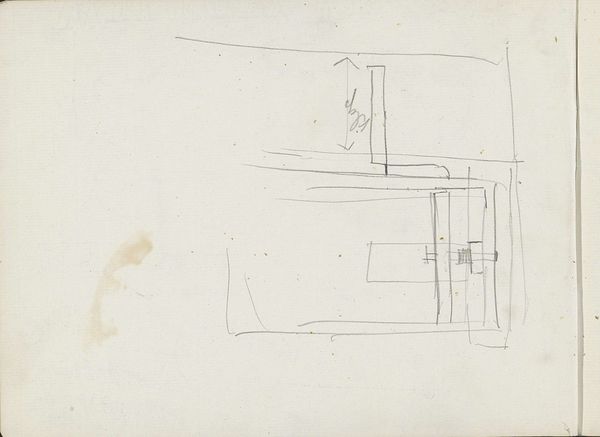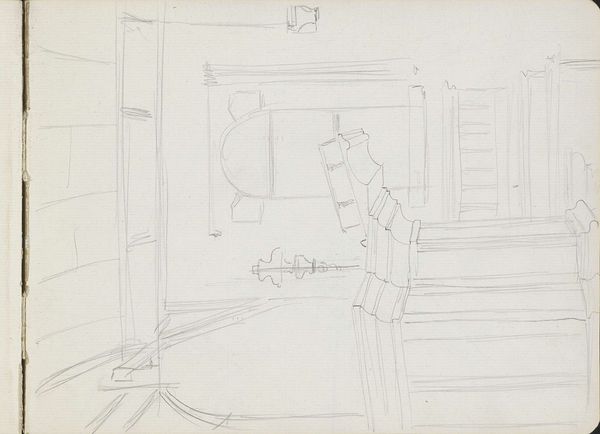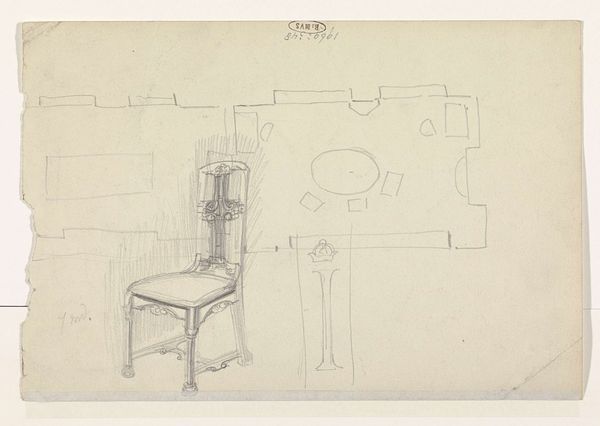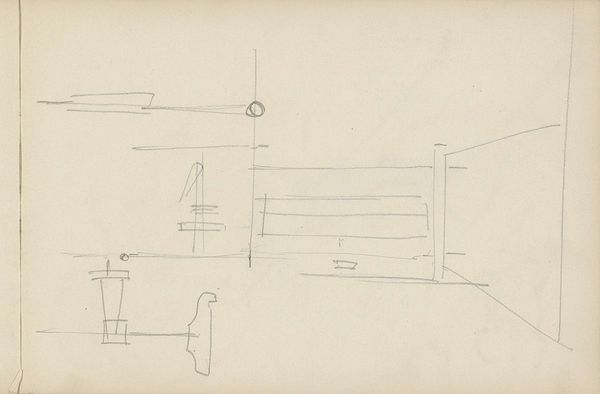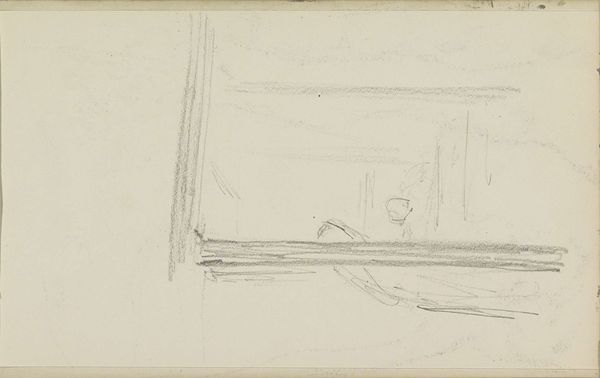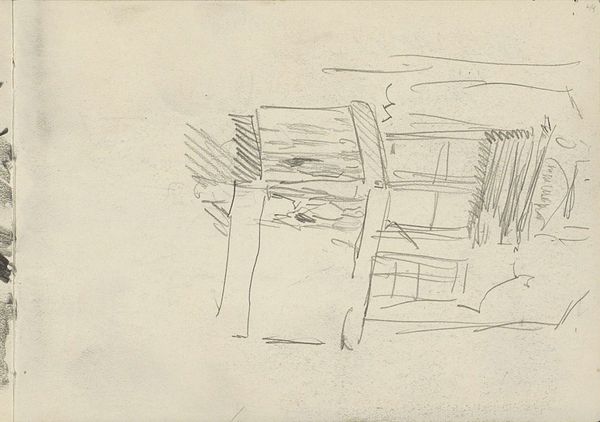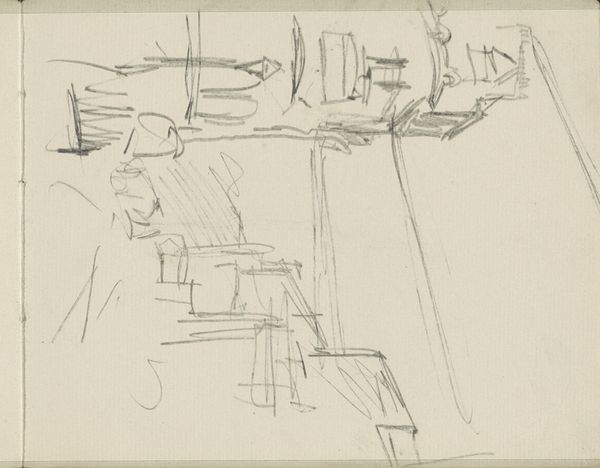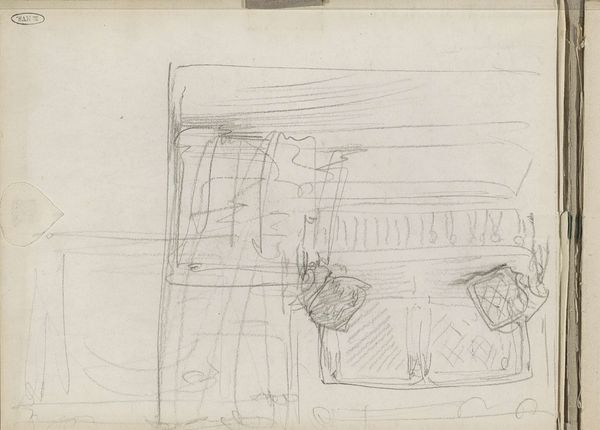
drawing, pencil, graphite
#
drawing
#
pencil
#
graphite
#
realism
Copyright: Rijks Museum: Open Domain
Curator: This is "Muur van een keuken met een kraan en plank met potten," or "Wall of a kitchen with a tap and shelf with pots" by Bramine Hubrecht, created sometime between 1865 and 1913. It's a graphite, pencil, and drawing piece. Editor: It has an unfinished, ghostly air about it, doesn't it? It looks like the faintest memory of a kitchen rather than a solid space. Curator: That sensation may stem from the artist's commitment to realism; depicting the space exactly as she saw it. If she intentionally captured it's liminal quality, it brings to mind broader conversations around domestic labor, its often unacknowledged presence. What are the politics of viewing labor this way? Who does it serve? Editor: Interesting...but I'm more immediately struck by the individual objects themselves. Look at the shapes of those pots, each carefully rendered with a sense of weight and volume, even in these spare lines. They call to mind centuries of symbolic association with hearth and home, the nurturing, life-sustaining power of the feminine. Curator: It's tempting to fall into essentialist interpretations of the feminine as inherently domestic. Instead, might these objects suggest the burdens placed upon women, confined to domestic spheres without access to power structures? It forces us to grapple with agency. Editor: But consider how these ordinary objects have evolved through cultural history. That single tap becomes an emblem of purification. Each container can signify the vessel of the soul. They aren't simply burdens; they are potent, deeply coded symbols. Curator: Symbolism can be a slippery slope. Isn’t there danger in ascribing fixed meanings, neglecting how meaning shifts based on intersecting identities and socio-historical contexts? Editor: I’d argue that these enduring motifs resonate across cultures precisely because they tap into universal human experiences. Doesn't the simplicity itself give rise to the universality? Curator: I’m seeing how analyzing both material realities and cultural echoes are essential. What do you think about closing us out with your impressions, bearing these different ideas in mind? Editor: Absolutely. The drawing initially appeared modest. Now I find it’s more than just a quick sketch: it’s an archive of meanings condensed into a deceptively humble composition.
Comments
No comments
Be the first to comment and join the conversation on the ultimate creative platform.
